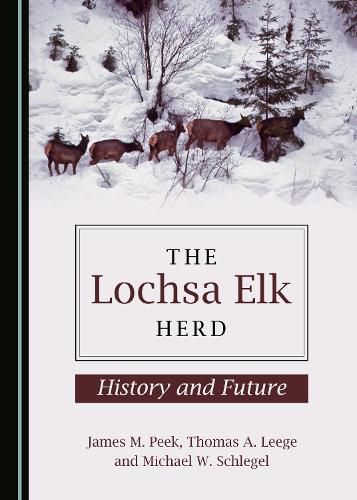Readings Newsletter
Become a Readings Member to make your shopping experience even easier.
Sign in or sign up for free!
You’re not far away from qualifying for FREE standard shipping within Australia
You’ve qualified for FREE standard shipping within Australia
The cart is loading…






Northern hemisphere ungulates occupy a variety of habitats of varying degrees of permanency. Populations that occupy drier areas must contend with different moisture patterns between years, but vegetation is relatively permanent, pending large-scale disturbances such as fires or heavy grazing. However, populations that occupy boreal forests and the moist inland coniferous forests often benefit from the major vegetation change that typically follows fire or logging. This volume records the history of an elk population that occupies these types of forests. Major fires in the 1910-1934 period created millions of acres of highly palatable shrubs that created a habitat for a burgeoning elk population. Coupled with the reduction of major predators, hunting, and other human activities in the 1930s and 1940s, the elk herd expanded to levels that are unlikely to be reached again and may never have occurred before. This pattern has occurred in many forests across the Holarctic hemisphere. Efforts to retain elk and other species including moose in these forests will have to be coordinated with other activities including logging and fire. Elk must be recognized as being products of forest disturbance.
$9.00 standard shipping within Australia
FREE standard shipping within Australia for orders over $100.00
Express & International shipping calculated at checkout
Northern hemisphere ungulates occupy a variety of habitats of varying degrees of permanency. Populations that occupy drier areas must contend with different moisture patterns between years, but vegetation is relatively permanent, pending large-scale disturbances such as fires or heavy grazing. However, populations that occupy boreal forests and the moist inland coniferous forests often benefit from the major vegetation change that typically follows fire or logging. This volume records the history of an elk population that occupies these types of forests. Major fires in the 1910-1934 period created millions of acres of highly palatable shrubs that created a habitat for a burgeoning elk population. Coupled with the reduction of major predators, hunting, and other human activities in the 1930s and 1940s, the elk herd expanded to levels that are unlikely to be reached again and may never have occurred before. This pattern has occurred in many forests across the Holarctic hemisphere. Efforts to retain elk and other species including moose in these forests will have to be coordinated with other activities including logging and fire. Elk must be recognized as being products of forest disturbance.